Denemek ALTIN - Özgür
TOWARDS an INDI(A)GENE: RE-IMAGINING INDIA'S DESIGN PHILOSOPHY
LA 74
|Journal of Landscape Architecture
The article visits some of the less documented traditional practices of nature conservation and eco-friendly lifestyles, belonging to different rural geographies in the Indian subcontinent. It also points out the possibility of adapting these practices within the current urban scenario of India to achieve climate resilience

Time and again, redundant monuments built under civilizations that were extinct ages ago, give a human face to Indian architecture. We often neglect age-old design interventions and engineering feats still functioning in remote places within the subcontinent. Although the built environment in early civilizations as well as today’s cities fundamentally control nature, the traditional systems do this in a more sustainable manner with minimal impact on their surroundings. While the global community is searching for ways to realize the climate ambitions for the millennium, traditional Indian communities have already established an accumulative body of knowledge, practices, skills and beliefs that bring to life concepts like “zero emissions”, “low carbon” and “sustainable living”, way before these terms became en vogue. Tested from time to time and passed down from generation to generation they conjure an image of the Indian design philosophy largely shaped by topographical features, surrounding landscapes, climate and other natural values. This gave rise to multiple cultures, be it in terms of the food they eat, the clothes they wear, the materials they build their houses with or the festivals they celebrate.

The concept of environment in Indian philosophy
In traditional Indian societies, environment is perceived as a living being. Ancient texts like the Vedas and folktales emphasize on maintaining an interdependent relationship with nature- humans and nature cannot be seen as two separate entities. For the
Bu hikaye Journal of Landscape Architecture dergisinin LA 74 baskısından alınmıştır.
Binlerce özenle seçilmiş premium hikayeye ve 9.000'den fazla dergi ve gazeteye erişmek için Magzter GOLD'a abone olun.
Zaten abone misiniz? Oturum aç
Journal of Landscape Architecture'den DAHA FAZLA HİKAYE
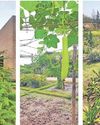
Journal of Landscape Architecture
PLANTING IN URBAN AREAS NOTES
In urban landscapes, while balancing aesthetic design with their ecological functions, the understanding of plants in respect of their ecozones*, microhabitats, and species plays a crucial role. Native plants offer ecological benefits but face challenges in urban environments. There are some pragmatic considerations in this regard.
3 mins
LA 78

Journal of Landscape Architecture
PLANTS IN ECOLOGY AND DESIGN
'100 Plants' offers insight into Delhi's ecology, guiding landscape architects and gardeners to cultivate sustainable, bio-diverse urban landscapes. It is an essential resource for all plant enthusiasts.
3 mins
LA 78

Journal of Landscape Architecture
LANDSCAPE LUMINAIRES CAPTURING THE ESSENCE OF LANDSCAPES
Landscape luminaires blend with architecture, enhancing safety, security, accentuation, and aesthetics while minimizing light pollution and promoting sustainability for a captivating outdoor experience.
2 mins
LA 78
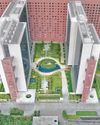
Journal of Landscape Architecture
SURAT DIAMOND BOURSE
The landscape design of the corporate-commercial centre, inspired by the five elements of nature and Vastu principles, attempts to create a unique sense of place. It combines design with public art, encouraging a harmonious environment for business and leisure.
2 mins
LA 78
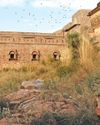
Journal of Landscape Architecture
SIX SENSES FORT BARWARA RAJASTHAN
In the transformation of a historic 14th century fort-an erstwhile home of a Rajasthan royal family-into a luxury resort, native plants and indigenous materials play a pivotal role, redefining luxury with ecological sensitivity.
4 mins
LA 78
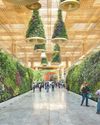
Journal of Landscape Architecture
'A TERMINAL IN A GARDEN' PUTTING NATURE AND BIODIVERSITY AT THE HEART OF THE PASSENGER EXPERIENCE
The design of Terminal 2 (T2) at Kempegowda International Airport in Bengaluru is an attempt to provide a sensory and biophilic experience for passengers.
4 mins
LA 78
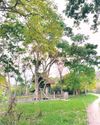
Journal of Landscape Architecture
IDEAS OF 'SCENERY' AND 'LANDSCAPE' LINKING GEOGRAPHY WITH LANDSCAPE ARCHITECTURE
The term ‘landscape’ while encompassing natural and human elements, is understood differently among disciplines. Geographers, another set of experts working closely with nature, provide crucial ecological data, aiding landscape architects in creating sustainable designs.
3 mins
LA 78
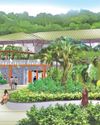
Journal of Landscape Architecture
THRISSUR ZOOLOGICAL PARK KERALA
The relocated Zoo aims to showcase rich Western Ghats ecosystems, support nature conservation, and provide immersive visitor experience. The development integrates ecological restoration, architecture and landscape while improving livelihood opportunities of the local community.
2 mins
LA 78

Journal of Landscape Architecture
ECOLOGY AND LOCAL CULTURE
With a working panel of scientists and experts from different fields of plant and animal ecology, the Nature Conservation Foundation is a Mysore-based NGO, engaged in exploring, understanding, and conserving the natural world through research and responsible engagement with society.
4 mins
LA 78
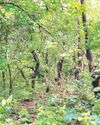
Journal of Landscape Architecture
BEAUTY FOLLOWS COMPLEXITY
Designers must heed Sullivan's \"form follows function\" to avoid beauty over function. Following nature in landscape design enhances ecological productivity while promoting sustainability with principles of use of native species, biodiversity, and conservation of natural resources.
5 mins
LA 78
Translate
Change font size
